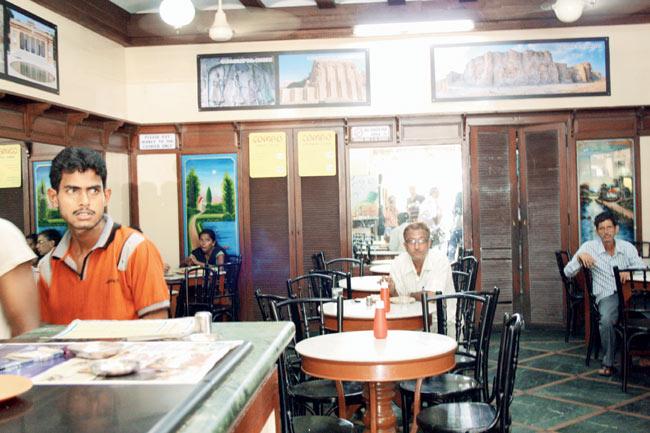One of Mumbai's most endearing albeit fast fading icons — the Irani cafés — will be chronicled in a coffee table book that is set for a late 2015 release

Mumbai's Irani cafes
It was in January 2014, when the news that B Merwan & Co was going to shut down surfaced, that Simin Patel, founder of Bombaywalla.org and freelance photographer Hashim Badani — both self confessed city buffs, decided to set the ball rolling to create a concrete legacy centred on Mumbai’s popular Irani cafés.

Sassanian Boulangerie at Dhobi Talao retains the interiors of a typical Irani café, including frames from their homeland, Iran, marble top tables and wooden furniture. PIC/dhara vora
ADVERTISEMENT
Patel, who runs the popular blog along with Badani, Sitanshu Shukla, Hersh Acharya and DJ Murty, had been featuring these cafés regularly. In fact, a chapter of her PhD, which she is pursuing at University of Oxford, traces a wave of migration of Zoroastrian famine refuges to Bombay in 1871-2. “The book happened unexpectedly. Priya Kapoor, editorial director at Roli Books was in touch with Hashim who connected Priya to me and it nicely fell into place,” she shares via email.
The Delhi-based Kapoor was toying with this idea for nearly four years: “I was surprised that such a book hadn’t been done before. We want it to be a social history and a tribute to these landmarks that are sadly, seeing a decline.”
Badani, by virtue of having a photojournalist bent, had been documenting the changes within the old city for five years, and “the Irani cafés, were naturally, an element to this,” he says, adding, “It’s inevitable for these cafés to be mentioned whenever talk veers to Mumbai’s food-scape. These cafes reflect the perfect example of diversity, where lines are not drawn according to class. It reminds me of a Rohinton Mistry novel about old Bombay,” he reveals.
Kapoor was clear to get Patel and Badani on board for this title, “I was familiar with Hashim’s work on the city, while Simin came across as someone who understood its culture and the character. We aren’t looking at recipes and the food aspect only, but the overall picture of how and why this community arrived in India, their beginnings, how these family-run restaurants flourished, their importance and eventual fading out.”
Patel shares about the roadmap: “There has been no in depth study — one that combines a historical archive with an oral one,” adding that the media tends to focus on the current state of the cafés — their impending closure or unexpected reopening. “All the attention attests to how well-loved and cherished the cafés are. The more they are in the limelight, the better it is for everyone,” she believes. The documentation should take about two or three months of solid work. “We are keen to record the interviews of all the proprietors, Zoroastrian and Muslim Iranis,” she articulates.
Both agree that their biggest challenge would be to get café proprietors to participate and cooperate. “Some are friendly, helpful and eager to share their stories, while others can be rude and dismissive. We will have to charm them into cooperating,” she encapsulates.
 Subscribe today by clicking the link and stay updated with the latest news!" Click here!
Subscribe today by clicking the link and stay updated with the latest news!" Click here!







